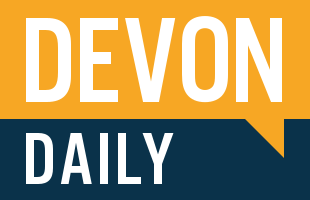
How Payment Orchestration is Redefining Fintech for Entrepreneurs
Efficient payment processing is critical for businesses of all sizes. Aiming to reach it and streamline their payment processes, entrepreneurs are increasingly turning to payment orchestration platforms. This article explores how payment orchestration companies are redefining fintech, providing insights into its benefits, challenges, and impact on the broader financial ecosystem.
What is Payment Orchestration?
Payment orchestration is a process that centralises and optimises the management of payment services across multiple providers, gateways, and methods. Unlike a traditional payment gateway that serves as a single point of transaction processing, a payment orchestration platform (POP) can connect various payment gateways, acquirers, and alternative payment methods. It offers businesses the ability to route transactions intelligently based on factors such as costs, currency, and regional preferences.
Key Features of POPs
- Unified API integration: A single API that connects merchants to multiple payment service providers simplifies integration efforts.
- Smart routing: Dynamic routing directs transactions to the most suitable payment gateway, minimising costs and improving transaction approval rates.
- Automated reconciliation: Streamlines the process of matching transactions with bank statements, reducing manual errors.
- Fraud prevention: Integrated fraud detection tools help secure payments, minimising risks for businesses handling large volumes of transactions.
Role of Payment Orchestration in Fintech Ecosystem
Payment orchestration platforms are becoming pivotal in the fintech landscape, enabling businesses to optimise their payment operations. They offer solutions that go beyond traditional gateways by providing flexibility, reducing transaction fees, and enhancing the user experience. For entrepreneurs, this means having access to a payment system that is scalable, cost-effective, and designed for global reach.
Payment Orchestration vs. Payment Gateway: Understanding the Difference
The distinction between payment orchestrators and payment gateways is essential for understanding the value of orchestration:
- Payment gateways: Act as a bridge between a merchant’s website and a payment processor, enabling the transmission of payment data.
- Payment orchestrators: Offer an umbrella solution that integrates multiple gateways and methods, allowing businesses to diversify their payment acceptance and optimise transaction routing.
The flexibility of payment orchestration enables businesses to scale their operations across different markets, catering to the needs of international audience. For instance, an e-Commerce business using a payment system for small businesses can easily scale and adapt to customer preferences in various regions by offering local payment methods alongside global ones.
Why Use Payment Orchestration
Payment orchestration provides several advantages that are particularly valuable for entrepreneurs and small business owners looking to compete in the global marketplace.
Cost Efficiency
One of the primary benefits of a POP is its ability to reduce transaction costs. By leveraging smart routing, merchants can automatically select the most cost-effective payment processor for each transaction. This is particularly beneficial for businesses with high transaction volumes, where even small cost reductions per transaction can lead to significant savings.
Enhanced Security
Secure payment handling is a top priority for businesses, especially when dealing with sensitive customer data. Payment orchestration platforms and payment gateways for high-risk merchants usually integrate advanced fraud detection tools and offer features like tokenisation and 3D Secure, ensuring that transactions are processed safely. This helps businesses build trust with their customers and comply with regional data security regulations like GDPR in Europe and CCPA in the United States.
Simplified Global Expansion
For businesses aiming to expand internationally, international payment systems and payment orchestration simplifies the process of accepting payments in different currencies and through diverse methods. It enables seamless integration with local PSPs and offers automated currency conversion, making it easier for businesses to operate in multiple countries without the hassle of maintaining separate payment infrastructures.
How Payment Orchestration Platforms Improve Customer Experience
In the competitive world of e-Commerce, customer experience can make or break a business. Payment orchestration enhances this experience by offering a seamless, frictionless checkout process. By supporting various payment options and ensuring high transaction approval rates, these platforms minimise cart abandonment rates – a common issue in online retail. Additionally, faster and more reliable payment processing leads to better customer satisfaction and loyalty.
Choosing the Right Payment Orchestration Provider
Selecting a payment orchestration provider is a crucial decision for any business. Entrepreneurs should consider factors such as pricing models, the range of payment gateways supported, and the level of customer support offered by the provider. Here’s a quick checklist to help in the selection process:
- Integration capability: Ensure that the platform can integrate with your existing systems and ecommerce channels.
- Geographic reach: Verify if the provider supports payment methods in the regions you plan to operate.
- Security features: Look for robust security measures, including PCI DSS compliance, encryption, and tokenisation.
- Scalability: Choose a platform that can grow with your business and accommodate increasing transaction volumes.
- Support and training: Evaluate the quality of customer support and any onboarding assistance provided.
The Future of Payment Orchestration in Fintech
As fintech continues to evolve, payment orchestration is likely to play an even more significant role. The shift toward digital payments and the increasing demand for integrated payment solutions suggest that businesses will continue to adopt orchestration platforms. Emerging technologies like artificial intelligence (AI) and machine learning (ML) are expected to further enhance payment routing and fraud detection capabilities, making these platforms even more powerful.
Moreover, as e-Commerce orchestration and digital wallets gain popularity, POPs will enable businesses to remain agile and adaptable to changing market demands. Entrepreneurs who embrace these technologies early can gain a competitive edge, positioning themselves for success in an increasingly digital economy.
Conclusion
Payment orchestration is a strategic tool that enables businesses to manage their payments more efficiently, reduce costs, and provide better customer experiences. The ability to simplify processes through orchestration offers a clear path forward for businesses seeking growth and efficiency. For entrepreneurs, adopting a payment orchestration platform can mean the difference between struggling to keep up with market demands and thriving in a competitive environment.











